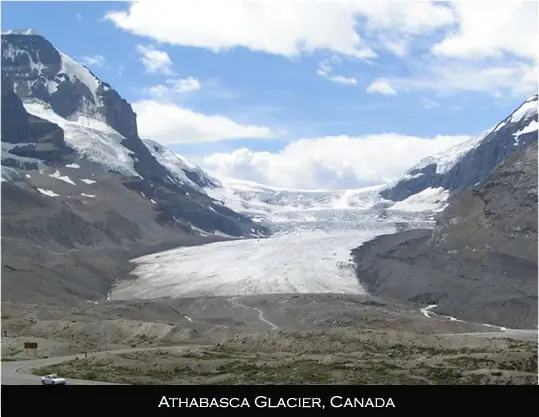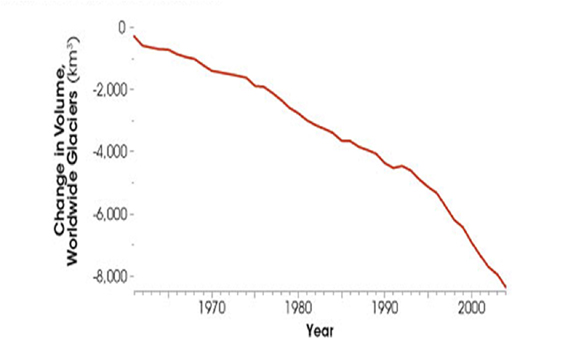The melting Athabasca Glacier is one of the six principal toes of the Columbia Ice field, located in the Canadian Rockies. The Columbia Ice field is a surviving remnant of the thick ice mass that once mantled most of Western Canada’s mountains. Due to the warming climate, the glacier has receded more than 1.5 km in the past 125 years and lost over half of its volume.

The glacier moves down from the ice field at a rate of several centimetres per day. Due to its close proximity to the Ice fields Parkway, between the Alberta towns of Banff and Jasper, and rather easy accessibility, it is the most visited glacier in North America. The leading edge of the glacier is within easy walking distance and hidden crevasses have led to the deaths of unprepared tourists.
The glacier is approximately 6 km (3.75 miles) long, covers an area of 6 km² (2.5 mi²), and is measured to be between 90 metres (270 ft) and 300 metres (1000 ft) thick.

Results from 1990s interferometric studies of the Columbia Ice field (compared to previous studies carried out in the 1950s and 1960s) also indicate that the glacier has dramatically thinned and retreated in recent decades, and that an acceleration in the flow from the accumulation area has occurred. About 8,000 cubic kilometres of ice have been lost by glaciers worldwide since 1960, including the Himalayan Gangotri glacier, and the Chacaltaya Glacier in Bolivia.
